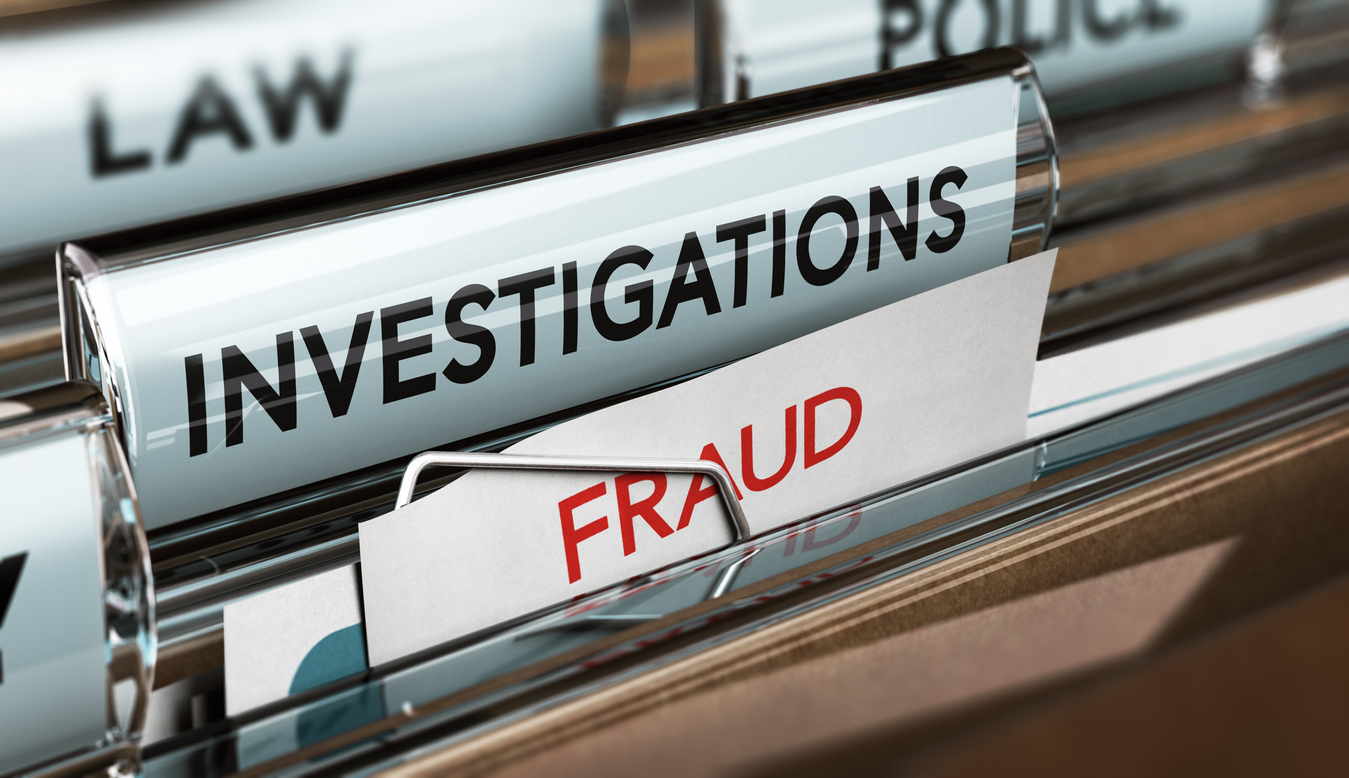A fraudster’s gain is someone else’s pain – or loss; but is the corporate fraudster’s gain always the same as the insured’s financial loss? Are the financial implications of the fraud always the same as the actual loss to an insured? The answer is often: no. The true financial loss to a company can be much greater – or smaller – than the amount that the fraudster gains. This article will demonstrate how companies may suffer a minor or zero loss, despite the financial gain made by the fraudster.
It is an unpleasant truth that not all employees are honest. There are too many instances where employees from all levels commit fraud, embezzlement or seek to enhance their own remuneration.
Often the higher the fraudster’s level of authority, the greater the losses tend to be. Most perpetrators commit the fraud after several years of working within the company, and the longer a fraudster has worked for the company, the more harm he/she may be likely to cause. Because of this, frauds are often discovered many years after it first started.
This article will speak to why a forensic investigation is important when substantiating a claim for losses sustained by an insured brought against insurers under fidelity cover. Subject to the specific wording of the insurance contract, a successful claim depends on establishing liability and whether the fraudulent actions by an employee led to a financial loss to the insured.
While the primary objective of the forensic investigation is focused on the substantiation of the quantum, the investigation can address other issues, including:
- Determination of the personal financial benefit to the perpetrator;
- Quantification of the true financial loss to the company;
- Assessment of the internal control procedures, to determine how the fraud was committed and what controls were circumvented;
- Investigation into the potential recovery prospects of the defrauded amounts;
- Preparation of a well-founded, independent report for criminal action or recovery purposes (from insurers, the perpetrator or the perpetrator’s related companies).
While many claimants focus on the extent to which the perpetrator has gained by way of the fraud, it is important to determine whether those financial gains represent a true financial loss to the insured, as this may impact whether insurers have any liability for such amounts under an insurance policy.
Often a limited initial quantum assessment of the claim in parallel with the policy response assessment is helpful in identifying whether there are material issues with the claim. This can strategically help insurers early on so they can respond more fully to the claim and enhance the likelihood of recovery.
The Type of Fraud Determines the Work of the Forensic Accountant
There are almost limitless methods that a fraudster can use to obtain financial benefit by exploiting the firm’s assets or business relationships. The main obstacle a fraudster faces is circumventing the company’s internal controls, finding existing loopholes, or in some cases creating opportunities through clever manipulation, or from use or abuse of powers entrusted to the employee.
One common method is for an employee with purchasing authority to create a fictitious supplier in his/her own name, or owned by him/her, for the purpose of authorising payments for goods or services on behalf of his employer. Of course, those goods or services may never have existed, were under-delivered, were not needed or never arrived at the insured’s premises. The fraudster may also manipulate purchase or sales prices and syphon off the inflated portion for their own benefit.
Another frequent method we see involves a payroll clerk creating one or more fictitious employees for the purposes of making false wage payments into an account controlled by the payroll clerk. Simpler forms of fraud include expense fraud when the personal expenses of an employee are inflated or presented as business expenses for reimbursement.
There are multiple ways in which the fraudster can gain financial benefit, and far too many to list here. The intent of this article is instead to highlight some areas insurers need to be aware of when considering a fraud claim under a fidelity policy – and to underline the fact that the financial gain achieved by the fraudster does not necessarily equate to the insured’s financial loss.
Eliminate Fraudulent Amounts That are Not a Loss to the Company
Typically, forensic accountants get involved when a fraud has been discovered and the amount of quantum needs to be determined. This is either on behalf of the defrauded company who sustained the loss, or on behalf of insurers who require a forensic quantum analysis of a recently notified claim under an existing fidelity policy.
Below, we look at two case studies which highlight how a forensic quantum analysis can assist the investigation of a fidelity claim.
Case Study 1:
An automotive supplier company maintained long-term supply contracts with various car manufacturers supplying plastic moulded component parts. One of the insured’s financial managers colluded with several of the insured’s suppliers (with whom the Finance Manager enjoyed some shareholding arrangements) that supplied raw materials for the insured’s manufacturing process to inflate purchase prices to a level that was in excess of the contractually agreed prices. The insured overpaid for raw materials, and the manager made significant personal gains due to his relationships with the supplying companies. In establishing its selling price to customers, the insured used its own actual purchase and manufacturing costs, which included the raw materials purchased at inflated prices. Ultimately, the insured agreed a cost-plus contract with its customer, meaning that the inflated purchase prices were passed on to the customer as the insured’s normal purchase costs.
In this case, the amount paid by the insured in excess of the true market value of the components was many millions of pounds whilst the personal gain to the finance director was only a portion of this amount. Despite this, following our forensic analysis of the supply contracts between the insured and their customers, we confirmed that goods were sold to customers on a cost-plus basis, and so the inflated purchase prices were passed on to the customer. This meant that the insured itself did not sustain any actual financial loss.
Case Study 2:
Another example involves a catering company whose financial controller diverted national insurance (NI) contributions for various employees payable to the government to himself. The scheme involved numerous payments and reimbursements in relation to the same employees, and the scheme went on undetected for many years before it came to light due to a ‘forced’ early retirement of the fraudster. Over a period of about 10 years, the total amount of actual NI contributions payments was less than the true amounts owed to the government. At the time of the discovery of the fraud, the insured had not sustained any financial loss apart from loss investigation costs and other related out-of-pocket costs.
A detailed analysis was necessary, as it was claimed that the underpayment led to a later repayment of the missing amounts to the government, and the exact amount needed to be determined. An investigation was commenced by the tax inspector, who ultimately found that the insured was only responsible for a portion of the losses identified. This meant that the fraudster had made a significant financial gain, but the insured sustained a smaller financial loss equal to the findings of the tax inspector.
Further to this, the forensic investigation report was used as the basis for a repayment scheme with the fraudster in exchange for not pressing charges, resulting in insurers only facing a claim for some fraud-related investigation costs.
What Do These Examples Tell Us?
These examples highlight that the amount of the actual fraud, the amount by which the fraudster benefited from the scheme, and the actual financial loss of the victim company do not necessarily match. Subject to the specific wording of the insurance contract it may be that only the actual financial loss of the victim (insured) company is recoverable from insurers.
A full forensic investigation of the fraud claim helps identify the above issues and may result in a significant adjustment to the original claim. This forensic invetigation also includes interviews with employees and potential suspects, reports on the internal controls and evaluation for potential weaknesses in internal controls, the determination of how the loss was able to take place, verification of payments to distinguish legitimate ones from those that are fraudulent, as well as quantification of the loss itself. The investigation report will also illustrate the flow of funds and chronology of the loss over time, as losses for many frauds are committed over several years.
Ultimately, a full forensic investigation will make the claims handler much better equipped to assess liability, understand loss quantum, construct loss settlement strategies, understand recovery prospects and hopefully resolve the claim in the quickest possible time.
Over the past few years MDD has been engaged in hundreds of fraud losses where we have been asked to determine the quantum of the loss, but also analyze pertinent information to comment on some of many of the other issues mentioned above. MDD London has been engaged in fraud and fidelity matters concerning about 25 countries.
The statements or comments contained within this article are based on the author’s own knowledge and experience and do not necessarily represent those of the firm, other partners, our clients, or other business partners.























